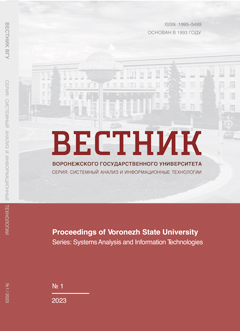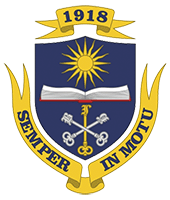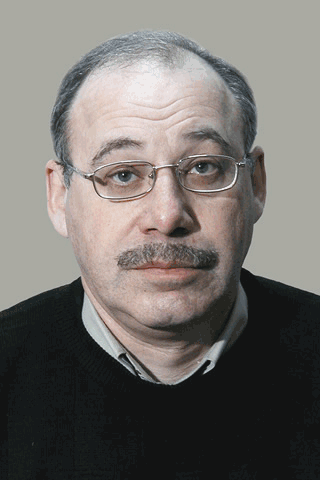Алгоритм отслеживания перемещений человека в видеопотоке с камер видеонаблюдения
Аннотация
Задача отслеживания перемещений объектов в видеопотоке (трассировка) является одной из наиболее сложных задач современных систем видеонаблюдения и видеоаналитики. Под задачей трассировки понимается задача автоматизированного распознавания и дальнейшего отслеживания объектов на протяжении последовательности кадров видеопотока. Целью данной статьи является не только краткий анализ некоторых существующих методов и алгоритмов, необходимых для визуализации движения объектов, но и разработка нового алгоритма трассировки перемещений человека в видеопотоке с возможностью отображения траекторий движения. Предложенный подход позволяет устранить некоторые недостатки существующих в настоящее время методов (наличие специального оборудования, необходимость предварительного обучения, перекрытие объекта другими объектами, выход за рамки поля зрения камеры). В работе описаны основные преимущества данного алгоритма, его важнейшие функции и возможности. Основные этапы работы алгоритма включают в себя: выбор в видеопотоке человека, осуществление процесса цифровой обработки, основой которого является разделение тела человека на составляющие части и получение цветовой гистограммы этих частей, прогнозирование локализации и распознавание исследуемого человека на всех последующих кадрах видеопотока, где осуществляется анализ цветовых пикселей RGB на основе методики сопоставления полученных данных с цветовой гистограммой составляющих частей основного объекта. Выходные данные предложенного алгоритма применяются в процедуре формирования и отображения общей картины перемещения конкретного человека в рамках всего видеопотока. Данная статья может быть интересна специалистам и экспертам, применяющим в своих работах методы компьютерного зрения для автоматизированного получения необходимых данных при анализе фрагментов видео.
Скачивания
Литература
2. Viola P. and Jones M. (2001) Rapid Object Detection using a Boosted Cascade of Simple Features. Accepted Conference on Computer Vision and Pattern Recognition (CVPR 2001). P. 511–518. DOI
3. Minaev E. Yu., Kutikova V. V. and Nikonorov A. V. (2018) Tracking of objects in a video stream based on convolutional neural networks and fractal analysis. New technique. P. 2792–2898. (In Russian)
4. Artemov A. A., Kavalerov M. V. and Kuznetsov G. S. (2011) The problem of finding objects in images using computer vision based on color information. Bulletin of Perm State Technical University. Electrical engineering, information technology, control systems. P. 70–79. (In Russian)
5. Shelabin D. A. and Sergeev S. L. (2013) The process of tracing moving objects in a video stream. Actual problems of humanities and Natural Sciences. P. 71–77. (In Russian)
6. Zhivrin Ya. E. and Alkzir Nafeh Bashar (2018) Methods for determining objects in images. Young Scientist Magazine. 7 (193). P. 8–19. (In Russian)
7. Pchelkin A. V. and Nikiforov M. B. (2020) An algorithm for measuring the coordinates of an object in a video stream for an object tracking system with a prediction of the trajectory of movement. Izvestia of Tula State University. Technical Sciences. (12). P. 29–35. (In Russian)
8. Grabner H., Grabner M. and Bischof M. (2006) Real-time Tracking via On-line Boosting. In Proceedings British Machine Vision Conference (BMVC). P. 47–56. DOI
9. Babenko B. (2009) Visual Tracking with Online Multiple Instance Learning. Computer Vision and Pattern Recognition, CVPR 2009. IEEE Conference. P. 101–108. DOI
10. Henriques J. F. (2015) High-Speed Tracking with Kernelized Correlation Filters. IEEE transactions on pattern analysis and machine intelligence. P. 301–314. DOI
11. Lyashov M. V., Bereza A. N. Babaev A. M. and Kotsyubinskaya S. A. (2018) Neural network system for tracking and recognizing objects in a video stream. Modern high-tech technologies. (12-1), P. 102–107. (In Russian)
12. Pastushkov A. V. (2018) Method and algorithms for searching for an object in a video stream. Tomsk State University of Control Systems and Radio electronics (TUSUR) RAS. Tomsk, Russia. (In Russian)
13. Gumenyuk M. M. (2022) Analysis of solutions for detecting and recognizing objects in images. Management problems in socio-economic and technical systems: sat. sci. articles XVIII International Scientific and Practical Conference. 14–15 April 2022, Saratov, Russia, P. 126–132. (In Russian)
14. Erokhin D. Yu. and Ershov M. D. (2018) Modern convolutional neural networks for object detection and recognition. Digital signal processing. 3. P. 64–69. (In Russian)
15. Kukharev G. A. and Shchegolova N. L. (2018) Methods of two-dimensional projection of digital and images into their own subspaces: features of implementation and application. Computer optics. 42(4). P. 637–656. (In Russian)
16. Oliva D., Abd Elaziz M. and Hinojosa S. (2019) Metaheuristic Algorithms for Image Segmentation: Theory and Applications. New York, Springer Publishing Company. DOI
17. RussianBlogs. (2019) OpenCV Grabcut algorithm: segmentation and foreground extraction. URL
18. Fukunaga K. and Hostetler L. D. (1975) The estimation of the gradient of a density function, with applications in pattern recognition. IEEE Transactions of Information Theory. 21. P. 32–40. DOI
19. Shaposhnikov A. I. (2021) Feature vector selection for the MeanShift procedure. Reports of Tomsk State University of Control Systems and Radio electronics. 24 (2). P. 34–38. (In Russian)
20. Wikipedia (2020) Color difference. URL
- Авторы сохраняют за собой авторские права и предоставляют журналу право первой публикации работы, которая по истечении 6 месяцев после публикации автоматически лицензируется на условиях Creative Commons Attribution License , которая позволяет другим распространять данную работу с обязательным сохранением ссылок на авторов оригинальной работы и оригинальную публикацию в этом журнале.
- Авторы имеют право размещать их работу в сети Интернет (например в институтском хранилище или персональном сайте) до и во время процесса рассмотрения ее данным журналом, так как это может привести к продуктивному обсуждению и большему количеству ссылок на данную работу (См. The Effect of Open Access).



















